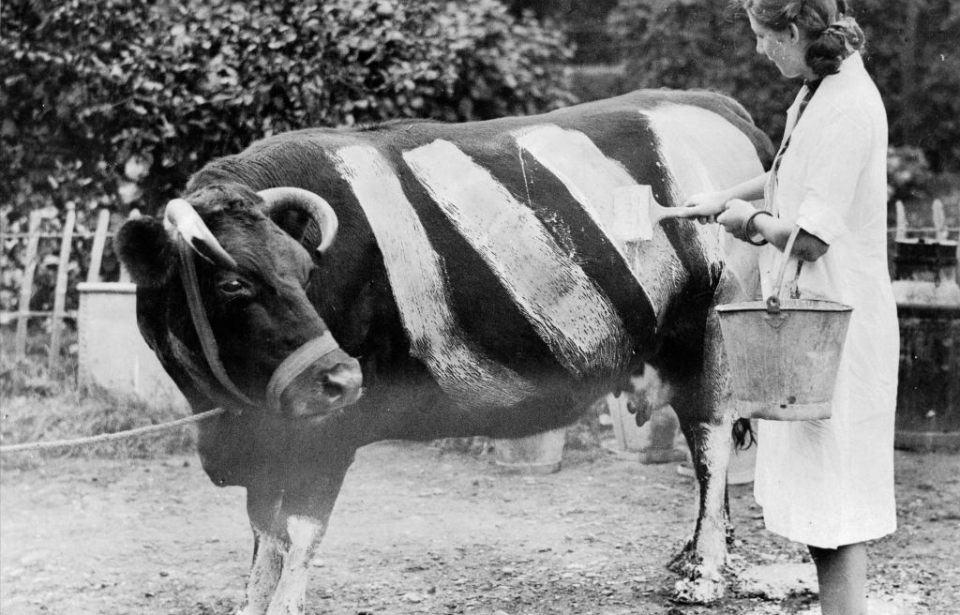While facing the Blitz during World War II, British farmers resorted to an unusual and creative tactic to protect their livestock and the public from potential accidents: they painted stripes on their cows. While this might seem like a peculiar approach, it actually served a practical purpose.
Shown above is a female farmer from Essex, who’s painting her cow with white paint. While this act helped protect the animal, the stripes were primarily added to prevent the cow from becoming a major hazard during the air raids that occurred during the Blitz from September 1940 to May ’41.
Beginning on September 1, 1939, blackouts were imposed across the United Kingdom, to try and minimize the number of targets identifiable to Luftwaffe bombers flying overhead. Citizens had to keep their windows and door cracks covered, so light wouldn’t seep out.
Outside of the home, traffic and street lights were fitted with special covers, so the beams were directed toward the ground. Special wardens were also tasked with monitoring their area, to ensure residents were properly following blackout protocol.
More from us: The Red Army Recruited Blind Citizens During the Siege of Leningrad
Overall, the practice led to many dangers, including increased crime. The primary problem, however, was that people struggled to see where they were going while driving. This is where the striped cows came in. Worried their livestock might meander onto the road during a blackout, farmers used the white stripes to ensure they were visible to those traveling with limited light.
This certainly made for a unique sight on Britain’s roadways.
